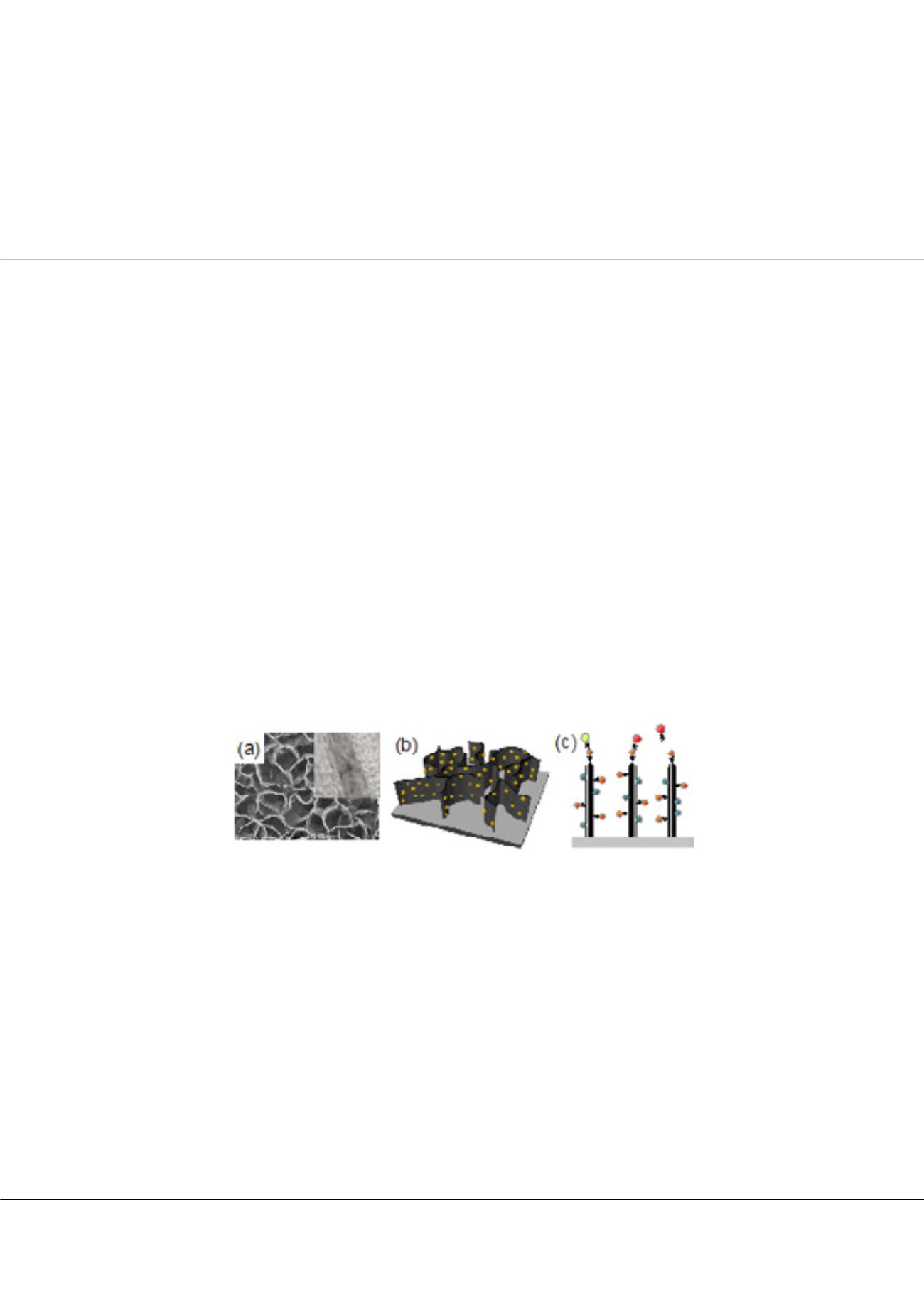

Page 31
Notes:
conferenceseries
.com
Joint Conference
July 17-18, 2017 Chicago, USA
International Conference on
DIAMOND AND CARBON MATERIALS & GRAPHENE AND SEMICONDUCTORS
Volume 6, Issue 6 (Suppl)
J Material Sci Eng, an open access journal
ISSN: 2169-0022
Diamond and Carbon 2017 & Graphene 2017
July 17-18, 2017
Carbon nanowalls, vertical nano graphene network as platform for electrochemical application
Mineo Hiramatsu
Meijo University, Japan
C
arbon nanowalls (CNWs) are few-layer graphenes with open boundaries, standing vertically on a substrate. The sheets
form a self-supported network of wall structures with thicknesses ranging from a few nanometers to a few tens of
nanometers, and with a high aspect ratio. The maze-like architecture of CNWs with large-surface-area graphene planes would
be useful as electrodes for energy storage devices, electrochemical and biosensors, and scaffold for cell culturing. From a
practical point of view, structures of CNWs including spacing between adjacent nanowalls, crystallinity and alignment should
be controlled according to the usage of CNWs. Moreover, post processes such as integration techniques including etching and
coating of CNWs and surface functionalization should also be established. We report the current status of the control of the
CNW structures during the growth processes as well as post treatment, together with examples of electrochemical applications
using CNWs. As an example of application, CNWs were used as platform for hydrogen peroxide (H
2
O
2
) sensing. This kind
of application is based on the large surface area of conducting carbon and surface modifications including decoration with
metal nanoparticles (NPs). It is known that H
2
O
2
is a major messenger molecule in various redox-dependent cellular signaling
transductions. Therefore, sensitive detection of H
2
O
2
is greatly important in health inspection and environmental protections.
For the H
2
O
2
sensing, CNWs were grown on carbon fiber paper (CFP) using plasma-enhanced chemical vapor deposition
with CH
4
/Ar mixture to increase the surface area. Then, CNW surface was decorated with Pt-NPs by the reduction of H
2
PtC
l6
in solution. Cyclic voltammetry results showed that the Pt-decorated CNW/CFP electrode exhibited excellent electrocatalytic
activity to the reduction of H
2
O
2
. Electrochemical experiments demonstrate that nano platform based on vertical nano
graphene offers great promise for providing a new class of nanostructured electrodes for electrochemical sensing, biosensing
and energy conversion applications.
Biography
Mineo Hiramatsu is a Full Professor of Department of Electrical and Electronic Engineering and the Director of Nanocarbon Research Center, Meijo University,
Japan. He also serves as the Director of Research Institute, Meijo University. He served as the Director of The Japan Society of Applied Physics. His main fields
of research are plasma diagnostics and plasma processing for the synthesis of thin films and nanostructured materials. He is the author of more than 100 scientific
papers and patents on plasma processes for materials science. He is the Member of organizing and scientific committees of international conferences on plasma
chemistry and plasma processing: International Conference on Reactive Plasmas, International Symposium on Advanced Plasma Science and its Applications
for Nitrides and Nanomaterials, International Symposium on Dry Process, International Conference on Advanced Nanomaterials, THERMEC and International
Conference on Processing and Manufacturing of Advanced Materials.
mnhrmt@meijo-u.ac.jpMineo Hiramatsu, J Material Sci Eng 2017, 6:6(Suppl)
DOI: 10.4172/2169-0022-C1-076
















